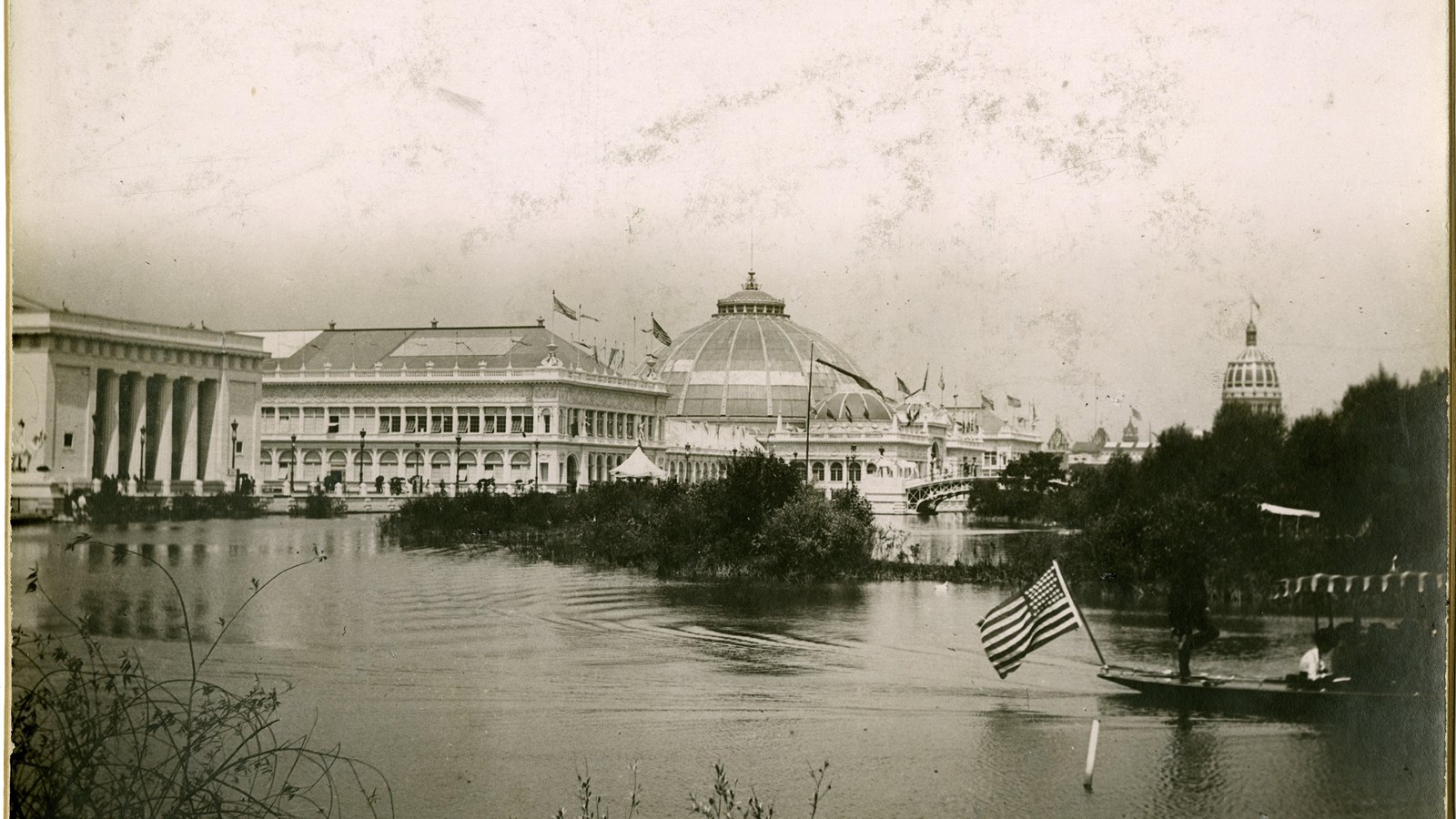Last updated: June 12, 2024
Place
World's Columbian Exposition

Olmsted Archives
Quick Facts
When Chicago was chosen as the city to host the World’s Columbian Exposition of 1893, Frederick Law Olmsted was called on to adapt his initial designs for the South Park Commission site, now called Jackson Park, Washington Park, and the Midway Plaisance, to be more appropriate for a fairground.
Olmsted would collaborate with architect Daniel Burnham to create Venetian-inspired please grounds complete with waterways and natural areas for quiet reflection, complementing the grand architecture of the fair. This collaboration between the two men would help launch the “City Beautiful” movement, promoting the inclusion of green space in urban centers to improve the community’s morale and quality of life.
Twenty years before the exposition, Olmsted and Calvert Vaux had conceived of lushly planted lagoons for this area of Chicago, which would finally come to fruition. Olmsted would dredge the swamp in the area, leaving an island at the center of the lagoon, dubbed The Wooded Island, which was meant to be the central piece of landscape architecture at the fair.
As Olmsted would explain it, his goal in the design at the Chicago World’s Fair was ““to establish a considerable extent of broad and apparently natural scenery, in contemplation of which a degree of quieting influence will be had, counteractive to the effect of artificial grandeur and the crowds, pomp, splendor and bustle of the rest of the Exposition.”
Source: "World's Columbian Exposition," Olmsted Online
For more information and primary resources, please visit:
Olmsted Research Guide Online
Olmsted Archives on Flickr
Olmsted would collaborate with architect Daniel Burnham to create Venetian-inspired please grounds complete with waterways and natural areas for quiet reflection, complementing the grand architecture of the fair. This collaboration between the two men would help launch the “City Beautiful” movement, promoting the inclusion of green space in urban centers to improve the community’s morale and quality of life.
Twenty years before the exposition, Olmsted and Calvert Vaux had conceived of lushly planted lagoons for this area of Chicago, which would finally come to fruition. Olmsted would dredge the swamp in the area, leaving an island at the center of the lagoon, dubbed The Wooded Island, which was meant to be the central piece of landscape architecture at the fair.
As Olmsted would explain it, his goal in the design at the Chicago World’s Fair was ““to establish a considerable extent of broad and apparently natural scenery, in contemplation of which a degree of quieting influence will be had, counteractive to the effect of artificial grandeur and the crowds, pomp, splendor and bustle of the rest of the Exposition.”
Source: "World's Columbian Exposition," Olmsted Online
For more information and primary resources, please visit:
Olmsted Research Guide Online
Olmsted Archives on Flickr
